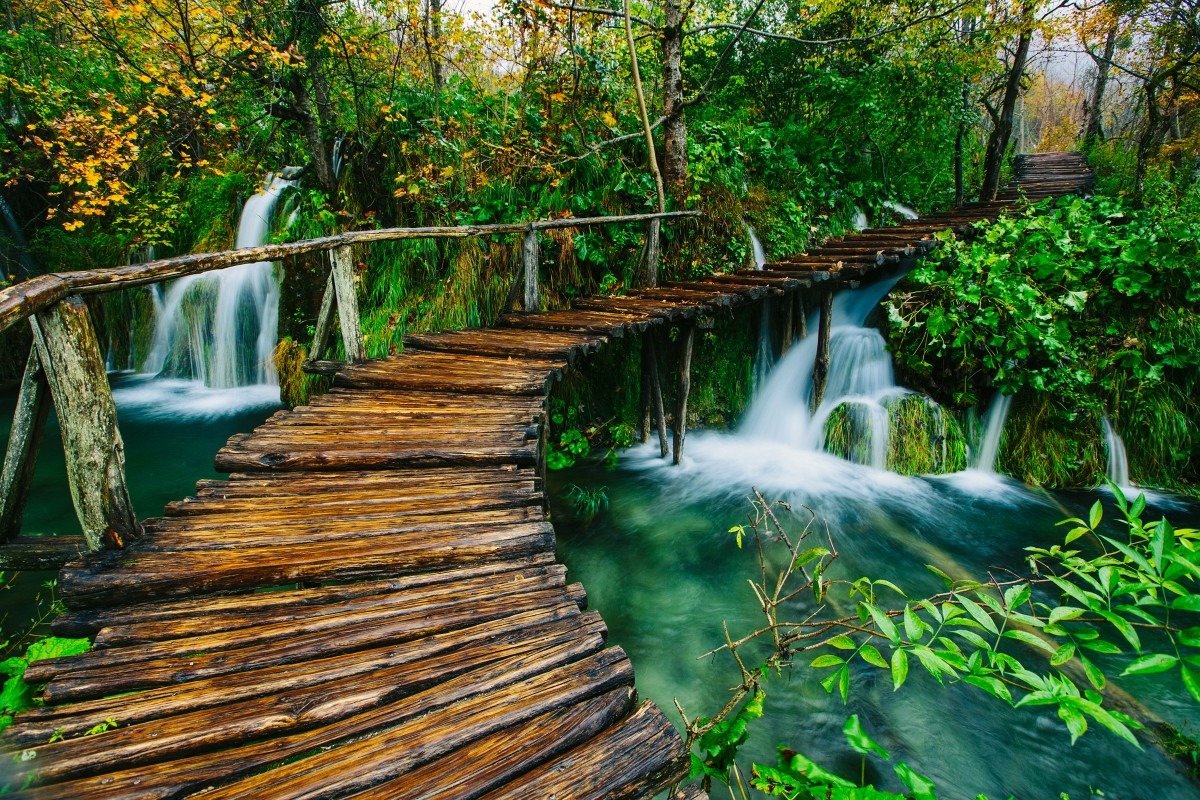Croatia´s World Heritage

Croatia´s World Heritage sites are culturally rich and numerous due to its historic relevance and great level of preservation. Some have been part of UNESCO for decades like Dubrovnik Old Town, Split’s Diocletian’s Palace and Plitvice Lakes.
We present some of the most famous Croatia´s World Heritage Sites.
Historical Complex of Split with the Palace of Diocletian
The Historical Complex of Split and Diocletian´s palace are archeological monuments dating back to the Roman times. The Roman Emperor Diocletian built the palace in the 3th century AD where he lived the last years of his life. In the 7th century the locals took up the palace walls where they built their homes and established the center of commerce. Today the palace is known as one of the most famous buildings on the Croatian coast and its ruins can be found throughout the city. The rest of the historical area is composed by Romanesque churches, medieval fortifications and palaces in Renaissance and Baroque style. The historic town of Split is nowadays filled with small cafés and restaurants and its Riva promenade is perfect for a walk by the beautiful harbor bay.

Old City of Dubrovnik
In 13th century it became an important Mediterranean sea power but throughout the history it was destructed on several ocations. In 1667 it was hit by the earthquake and in 1991 it was damaged by armed conflict. Nevertheless, the city managed to keep the architectural monuments almost intact and preserve its beautiful churches, monasteries and palaces. Its most famous attractions are the Old City Walls, Rector´s Palace, Dubrovnik Cathedral, the Franciscan monastery, etc. In 1979 it was inscribed into the UNESCO World Heritage list.

Plitvice Lakes National Park
The Plitvice National Park is one of the oldest national parks in Croatia. It consists of sixteen lakes, connected by various waterfalls. It total, the area has 300 square kilometres. The colors of the lakes range from azure to green, grey or blue. The lakes are divided in Upper and Lower lakes. The Upper lakes are larger and were made on the dolomite rock. Because of its location, the park is home of many natural phenomena and a rich biodiversity. There can be found bears, wolves and many bird species in the forest surrounding the lakes. There are several routes around the lake system and diferent hiking trails.

Episcopal Complex of the Euphrasian Basilica in the Historic Centre of Poreč
The Complex covers the basilica, the atrium, the baptistery and the episcopal palace, all examples of religious architecture.
The Basilica is also know as the Cathedral Basilica of the Assumption of Mary and is an example of Byzantine architecture. It was built in the 6th century based on part of the former church, built in 4th century. The windows are built in Gothic style and replace the old ones which were destroyed in an earthquake in the 15th century. One of the most interesting features of the basilica are its mosaics, representing the Christ with Apostles and the Annunciation and the Visitation, among others.

Historic City of Trogir
Trogir is an examle of a medieval town with Romanesque churches and Renaissance and Baroque buildings. In 1997 it was added to the UNESCO list of World Heritage Sites. Its many palaces, churches and towers are a mixture of Greek, Roman and Venetian influences. Trogir´s street plan dates to the Hellenistic period. Some of its most important buildings are the city gate and the city walls, the Duke´s Palace, the Cathedral, the Fortress Kamerlengo, etc.

The Cathedral of St James in Šibenik
The Cathedral of St. James is one of the most important architectural monuments in Croatia, joined to the UNESCO World Heritage List in 2000. It is known as the world´s largest church built completely out of stone which was quarried from the island of Brač, Korčula, Rab and Krk. Three architects worked on the construction of the cathedral: Francesco di Giacomo, Georgius Mathei Dalamticus and Niccolò di Giovanni Fiorentino and together they combined the influences of the cultures of Northern Italy, Dalmatia and Tuscany in Gothic and Renaissance art.

Stari Grad Plain on the Adriatic island of Hvar
The Stari grad Plan is a cultural landscape. Its principal agricultural activity has remained the same since the ancient Greek colonists (olives and grapes). It was set in 4th century BC. Today the plain is still in its original form, including the stone walls, stone shelters and water collection system. The plain is a natural reserve and an example of the ancient Greek argicultural system.


